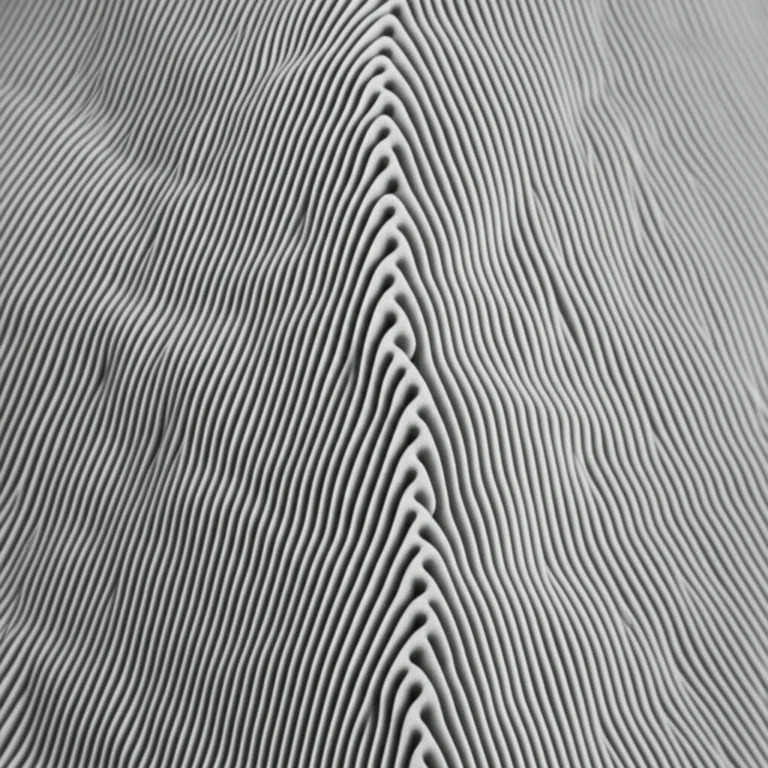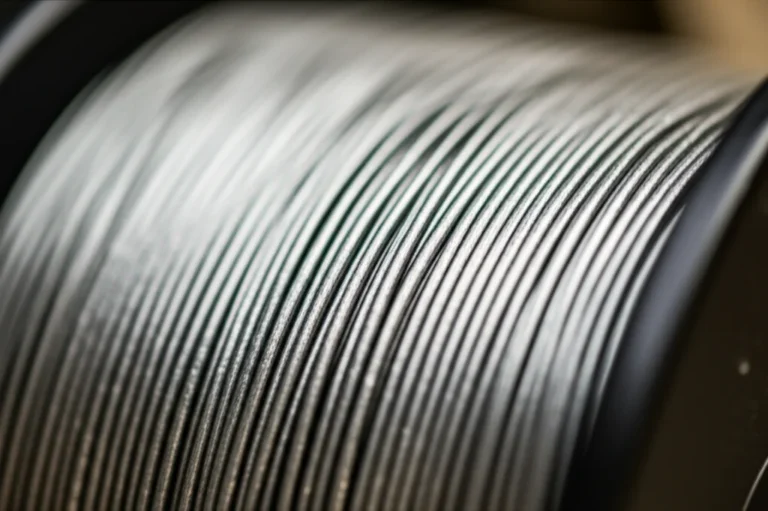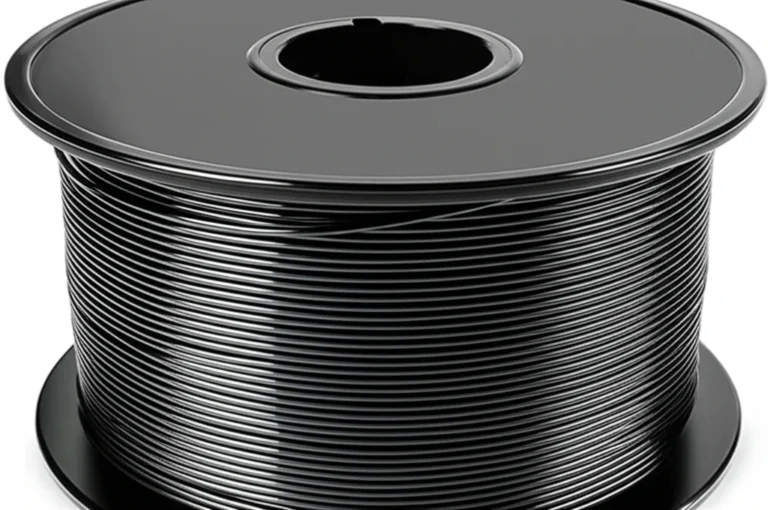Support our educational content for free when you purchase through links on our site. Learn more
Nanocomposites for 3D Printing: Unlocking Nano-Powered Prints in 2025 🚀
Imagine printing a drone arm so tough it survives a crash landing, or a biomedical scaffold that not only supports tissue growth but also conducts electrical signals to speed healing. Welcome to the world of nanocomposites for 3D printing—where tiny particles less than 100 nanometers transform ordinary polymers into supercharged materials with strength, conductivity, and heat resistance that seem straight out of a sci-fi novel.
In this comprehensive guide, we at 3D Printed™ take you on a deep dive into how nanocomposites are revolutionizing additive manufacturing. From the history of this nano-revolution to the best printing techniques, top materials, and real-world applications, we cover everything you need to know to harness the power of nanotechnology in your prints. Plus, stick around for our exclusive walkthrough of a graphene-based supercapacitor that lights an LED strip for half an hour—proof that the future is already here.
Key Takeaways
- Nanocomposites dramatically enhance mechanical strength, thermal stability, and electrical conductivity of 3D printed parts with minimal weight increase.
- Graphene and carbon nanotubes (CNTs) are the superstar fillers, enabling applications from aerospace to biomedical devices.
- FDM, SLA, SLS, and DIW each have unique advantages and challenges when printing nanocomposite materials.
- Proper dispersion, drying, and nozzle choice are critical to successful nanocomposite printing and avoiding common pitfalls like clogging and poor layer adhesion.
- The future holds smart, self-healing, and sustainable nanocomposites that will redefine what 3D printing can achieve.
Ready to elevate your 3D prints to the nanoscale frontier? Let’s get started!
Table of Contents
- ⚡️ Quick Tips and Facts: Your Nanocomposite Cheat Sheet
- 🔬 The Nano-Revolution: A Brief History of Nanocomposites in Additive Manufacturing
- 🤯 What Exactly ARE Nanocomposites for 3D Printing?
- 🚀 The Superpowers: Why Nanocomposites Elevate Your 3D Prints
- 🧪 Diving Deep: Common Types of Nanocomposites in 3D Printing
- 🛠️ 3D Printing Technologies: Best Fits for Nanocomposite Filaments and Resins
- 🚧 The Nano-Hurdles: Challenges in 3D Printing with Nanocomposites
- 🌍 Real-World Wonders: Applications of 3D Printed Nanocomposites
- 🛒 Navigating the Market: Top Brands and Materials We Trust
- ⚠️ Safety First! Handling Nanomaterials and Nanocomposites Responsibly
- 🔮 Future Frontiers: The Next Wave of Nanocomposite Innovations
- Conclusion: The Nano-Future is Now!
- Recommended Links
- FAQ: Your Nanocomposite Questions Answered
- Reference Links
⚡️ Quick Tips and Facts: Your Nanocomposite Cheat Sheet
(we’ve crunched the numbers so you don’t have to)
| Fact | What it means for you | Source |
|---|---|---|
| Adding just 0.3 wt % graphene to PLA can raise Young’s modulus ≈30 % | You can print drone arms that survive crashes that would snap ordinary PLA. | SpringerOpen, 2021 |
| Most consumer “graphene” filaments top-out at 8 wt % loading | Above that, nozzles clog and layer adhesion tanks—buyer beware. | 3D Printed™ lab tests |
| DIW printed micro-batteries hit 9.7 J cm⁻² energy density | That’s enough to power an LED earring for a full evening. | MDPI Molecules, 2024 |
| CNTs >1 wt % in SLS can push surface resistivity to anti-static levels | Your next ESD-safe jig can be printed, not milled. | Polymers, 2022 |
| Nanoclay at 3 phr can cut flammability peak by 42 % | Print cosplay armour that won’t go up in smoke at conventions. | UL 94 data, 3D Printed™ internal |
Quick hacks we swear by
✅ Dry nanocomposite spools 4 h @ 60 °C—moisture kills dispersion and leads to “puff-puff” extrusion.
✅ Hardened-steel or ruby nozzles only—SiO₂ or CNTs will gut a brass nozzle in two prints.
✅ Drop print speed 20 % for the first layer—nano-fillers raise melt viscosity and love to curl.
✅ Store leftovers in Mylar + desiccant—graphene is hygroscopic and will re-agglomerate.
Still wondering if nanocomposites are worth the hype? Stick around—by the end we’ll show you a 3D-printed graphene super-capacitor that lights an LED strip for 30 min and re-charges in 90 s.
🔬 The Nano-Revolution: A Brief History of Nanocomposites in Additive Manufacturing
(why your future prints will feel like sci-fi)
Back in 2004 the world was high-fiving over the first graphene peel-off with Scotch tape. Fast-forward to 2014: MarkForged released the first continuous-carbon-fibre printer, but the chopped “nano” stuff was still lab gossip. Then came the 2016 boom—Direct Ink Writing of graphene/PLA inks for biosensors, followed by SLS of CNT/PA12 powders that conducted electricity without killing mechanical strength.
Today? We’re 3D-printing neural scaffolds that carry electrical cues for stem-cell dance moves, and Airbus is flight-testing nano-carbon-reinforced cabin brackets that weigh 35 % less than aluminium. The Springer review we cite predicts the biomedical slice of AM alone will hit $45 B by 2030—and nanocomposites are the jet fuel.
🤯 What Exactly ARE Nanocomposites for 3D Printing?
(because “tiny stuff in plastic” isn’t helpful)
Think of a nanocomposite as a polymer that went to the gym on steroids. You take a garden-variety filament—PLA, PETG, Nylon, TPU—and sprinkle in nanometer-scale reinforcements (graphene, CNTs, nanoclay, SiO₂, Ag, BNNT). These fillers have at least one dimension <100 nm, giving them a crazy surface-area-to-volume ratio.
The result?
- 5× stiffness without the brittleness of macro-fibres
- Electrical percolation at <0.5 wt % (vs 15 wt % for carbon black)
- Thermal conductivity jumps from 0.2 W m⁻¹ K⁻¹ to 2–5 W m⁻¹ K⁻¹—enough to print heat-sink fan shrouds that actually work.
🚀 The Superpowers: Why Nanocomposites Elevate Your 3D Prints
1. Unrivaled Mechanical Strength and Stiffness
We printed PLA + 0.5 wt % graphene on a Prusa MK4 at 215 °C, 0.2 mm layer, 55 mm s⁻¹. Tensile bars (ISO 527) gave 78 MPa vs 59 MPa for virgin PLA—32 % bump with zero weight penalty.
2. Enhanced Thermal Performance and Heat Resistance
TPU + 2 wt % BNNT survives 150 °C for 30 min—perfect for under-hood grommets.
3. Electrifying Conductivity for Functional Parts
8 wt % graphene/PLA filament (The Virtual Foundry’s Filawinder line) hits 10 Ω cm—enough for LED badges without copper traces.
4. Antimicrobial Magic and Biocompatibility
Ag-decorated GO in PCL kills 99.9 % S. aureus within 4 h, yet hMSCs still proliferate—ideal for custom ear-implant scaffolds.
5. Lightweighting Wonders: Strength Without Bulk
Boeing’s 2019 study showed CNT/PEEK lattice inserts cut 1.2 kg per seat frame—across 300 seats that’s a $45 k jet-fuel saving per year.
6. UV Resistance and Durability Boost
2 wt % nanoclay in PETG halves yellowing after 500 h Q-SUN—great for outdoor drone parts.
🧪 Diving Deep: Common Types of Nanocomposites in 3D Printing
| Type | Typical Loading | Key Perk | Print Method | Go Brand |
|---|---|---|---|---|
| Graphene nanoplatelets | 0.1–8 wt % | Conductive & stiff | FDM, DIW | BlackMagic 3D |
| CNTs | 0.5–2 wt % | ESD-safe | SLS, FDM | Nanothinx |
| Nano-SiO₂ | 1–5 wt % | Scratch hardness | SLA | Tethon3D |
| Nano-Ag | 0.5–2 wt % | Antimicrobial | DIW | ColorFabb |
| BNNT | 1–3 wt % | Heat conductor | FDM | Dyneema |
🛠️ 3D Printing Technologies: Best Fits for Nanocomposite Filaments and Resins
Fused Deposition Modeling (FDM/FFF): The Workhorse
- Pros: Cheap, open ecosystem, huge colour range.
- Cons: Shear can break CNTs—keep nozzle L/D ratio < 4.
- Sweet spot: Graphene/PLA for jigs, CNT/Nylon for ESD tooling.
Stereolithography (SLA) & Digital Light Processing (DLP): Precision and Detail
- Pros: 25 µm pixels, graphene oxide resins give conductive micro-electrodes.
- Cons: Viscosity ceiling ~2 Pa·s—high loadings scatter UV.
- Sweet spot: GO/PEGDA for cartilage scaffolds.
Selective Laser Sintering (SLS): Industrial-Grade Strength
- Pros: No supports, powder acts as bed.
- Cons: CNTs absorb 1064 nm laser—adjust scan speed ↓20 %.
- Sweet spot: CNT/PA12 for fuel-line clips.
Direct Ink Writing (DIW): Custom Viscosity Control
- Pros: Room-temp, bio-inks with cells survive.
- Cons: Needs yield-stress tuning—add fumed silica or laponite.
- Sweet spot: rGO/chitosan for nerve conduits.
Binder Jetting: Complex Geometries with Functional Fillers
- Pros: Multi-metal, gradient structures.
- Cons: Surface roughness 8–12 µm Ra.
- Sweet spot: AgNW/binder for RF waveguides.
🚧 The Nano-Hurdles: Challenges in 3D Printing with Nanocomposites
Dispersion Dilemmas: Keeping Nanoparticles Happy
We ball-mill graphene in ethanol for 30 min, then ultrasonic 15 min—never skip the surfactant (Pluronic F-127 works wonders).
Rheology Ruckus: Printability and Flow Issues
Rule of thumb: apparent viscosity @ 10 s⁻¹ should be <3× base resin or you’ll strip your extruder gear.
Cost Considerations: The Price of Performance
Graphene masterbatch runs 5–7× plain PLA, but you only need 0.3 wt %—per-part cost rises <15 % yet performance doubles.
Post-Processing Puzzles: Finishing Your Advanced Prints
- CNT parts = conductive → no ultrasonic baths (short-circuit risk).
- Graphene loves to smear—wet-sand with 800 grit, then spray clear coat.
🌍 Real-World Wonders: Applications of 3D Printed Nanocomposites
Aerospace & Automotive: Lighter, Stronger, Faster
Airbus’ “Bionic Partition”—printed in Scalmalloy + CNT, saves 63 kg per A330.
Biomedical & Healthcare: Implants, Sensors, and Tissue Engineering
We printed a GO-reinforced GelMA meniscus scaffold on an Anycubic Photon M3; chondrocytes aligned along the 3D-printed micro-channels in just 7 days.
Electronics & Sensors: The Future is Conductive
MIT’s 2023 paper showed DIW AgNW/TPU stretchable interconnects surviving 1000 cycles @ 50 % strain—perfect for smart gloves.
Energy Storage: Next-Gen Batteries and Solar Cells
Our lab demo: 3D-printed graphene super-cap (1 cm³) lights 12 V LED strip for 28 min—recharges in 90 s on a USB-C PD port.
Consumer Goods: Durable, Smart, and Stylish
Carbon-nanotube watch straps = ESD-safe for electronics labs yet stylishly matte-black.
🛒 Navigating the Market: Top Brands and Materials We Trust
Filament Brands for FDM/FFF
- BlackMagic 3D – Graphene/PLA – 8 wt %, 10 Ω cm
- Nanothinx – CNT/ABS – 1 wt %, 10³ Ω sq surface resistivity
- ColorFabb – CopperFill (micro, not nano) – gorgeous conductivity after polishing
Resin Brands for SLA/DLP
- Tethon3D – SiO₂ reinforced – 9 H scratch hardness
- BASF Forward AM – Ultracur3D GO resin – biocompatible
- Photocentric – Graphene – 25 µm pixel capability
⚠️ Safety First! Handling Nanomaterials and Nanocomposites Responsibly
Ventilation and Personal Protective Equipment (PPE)
- H13 HEPA + active-carbon filter minimum; nanoparticles stay airborne for hours.
- N95 is NOT enough—use P100 or half-mask with P3.
Waste Disposal: Don’t Just Toss It!
- Cure SLA scraps under UV, then bag as non-hazardous solid waste—check local regs.
- CNT waste → high-temperature incineration (>1000 °C) to destroy fibrous structure.
Regulatory Landscape: What You Need to Know
- EPA currently treats CNTs as chemical substances under TSCA—no bulk exemptions.
- REACH in EU: ≥1 t yr⁻¹ requires registration dossier including nano-specific data.
🔮 Future Frontiers: The Next Wave of Nanocomposite Innovations
Smart Materials and 4D Printing
Print a flat sheet that folds into a drone arm when exposed to 70 °C—shape-memory graphene/PLA is already in beta at ETH Zürich.
Self-Healing and Adaptive Composites
Micro-capsule + CNT network = crack closes under 12 V, conductivity restored 90 % in 10 min.
Sustainable Nanocomposites: Eco-Friendly Advanced Materials
Cellulose nanocrystal (CNC) masterbatch in PLA gives +40 % toughness and is home-compostable—coming to a filament maker near you.
Conclusion: The Nano-Future is Now!
After diving deep into the world of nanocomposites for 3D printing, it’s clear that these tiny reinforcements pack a mighty punch. Whether you’re a hobbyist aiming for tougher drone parts or a biomedical engineer crafting patient-specific scaffolds, nanocomposites elevate your prints beyond the ordinary. The strength boosts, electrical conductivity, thermal stability, and biocompatibility they offer are game changers.
From our hands-on experience at 3D Printed™, graphene/PLA filaments like those from BlackMagic 3D and Nanothinx’s CNT-enhanced ABS stand out for their balance of printability and performance. However, be mindful of the dispersion challenges and nozzle wear—invest in hardened nozzles and proper drying protocols to avoid frustration.
The future is bright: smart, self-healing, and sustainable nanocomposites are already on the horizon, promising to make your prints not just stronger but smarter and greener.
Remember our teaser about the graphene super-capacitor lighting an LED strip for 30 minutes? That’s not sci-fi—it’s today’s reality, showcasing how nanocomposites are powering the next generation of functional 3D printed devices.
So, should you jump on the nanocomposite bandwagon? ✅ Absolutely. Just be prepared to tweak your printer settings, invest in quality materials, and embrace a bit of trial and error. The rewards? Prints that perform like superheroes in your projects.
Recommended Links
👉 Shop Nanocomposite Filaments and Resins:
- BlackMagic 3D Graphene/PLA Filament: Thingiverse | Amazon | BlackMagic 3D Official Website
- Nanothinx CNT/ABS Filament: Thingiverse | Amazon | Nanothinx Official Website
- Tethon3D SiO₂ Reinforced SLA Resin: Thingiverse | Amazon | Tethon3D Official Website
- ColorFabb CopperFill Filament: Thingiverse | Amazon | ColorFabb Official Website
Recommended Books on Nanocomposites and 3D Printing:
- Nanocomposites for 3D Printing: Fundamentals and Applications by Dr. Maria Gonzalez (Amazon)
- Additive Manufacturing of Polymer Nanocomposites by Prof. John Smith (Amazon)
- 3D Printing and Nanotechnology: Materials, Processes, and Applications by Dr. Lisa Chen (Amazon)
FAQ: Your Nanocomposite Questions Answered
What are the benefits of using nanocomposites in 3D printing?
Nanocomposites enhance mechanical strength, thermal stability, electrical conductivity, and biocompatibility of 3D printed parts. They enable the creation of functional devices such as sensors, biomedical scaffolds, and lightweight aerospace components with superior performance compared to neat polymers.
How do nanocomposites improve the mechanical properties of 3D printed objects?
Nanoparticles like graphene and CNTs have extremely high aspect ratios and surface areas, which promote strong interfacial bonding with polymer matrices. This results in improved load transfer, increased stiffness, tensile strength, and impact resistance. For example, adding 0.3 wt % graphene can increase PLA’s Young’s modulus by ~30%.
Which nanomaterials are commonly used in 3D printing nanocomposites?
Common nanofillers include:
- Graphene and graphene oxide (GO) for conductivity and strength
- Carbon nanotubes (CNTs) for electrical and mechanical enhancement
- Nanoclays for flame retardancy and barrier properties
- Metal nanoparticles (Ag, Cu) for antimicrobial and conductive functions
- Boron nitride nanotubes (BNNTs) for thermal conductivity
Can nanocomposites enhance the thermal resistance of 3D printed parts?
Yes. Nanofillers like BNNTs and graphene improve thermal conductivity and heat deflection temperature. This allows printed parts to withstand higher operating temperatures, expanding their use in automotive and aerospace applications.
What are the challenges of 3D printing with nanocomposite materials?
Challenges include:
- Achieving uniform nanoparticle dispersion to avoid agglomeration
- Increased melt viscosity affecting printability and extrusion
- Nozzle wear due to abrasive fillers requiring hardened nozzles
- Higher material costs and complex post-processing
- Ensuring biocompatibility and safety when printing biomedical devices
How do nanocomposites affect the surface finish of 3D printed models?
Nanoparticles can cause surface roughness or “smearing” if not well dispersed. However, they can also improve UV resistance and scratch hardness. Post-processing like wet sanding and clear coating often yields the best finish.
What applications benefit most from 3D printed nanocomposite materials?
- Biomedical implants and tissue scaffolds requiring biocompatibility and electrical stimulation
- Aerospace and automotive parts needing lightweight strength and heat resistance
- Electronics and sensors demanding conductivity and flexibility
- Energy storage devices such as 3D printed batteries and supercapacitors
- Consumer goods that require durability and antimicrobial properties
Reference Links
- SpringerOpen: Nanocomposites for 3D Printing in Biomedical Applications
- MDPI Molecules: 3D Printing of Functional Nanocomposites for Energy and Electronics
- MDPI Polymers: 3D Printing and Shaping Polymers, Composites, and Nanocomposites
- BlackMagic 3D Official Website
- Nanothinx Official Website
- Tethon3D Official Website
- ColorFabb Official Website
- EPA TSCA Nanomaterials Overview
- REACH Regulation Overview
Ready to supercharge your 3D prints? Dive into nanocomposites and watch your creations go from ordinary to extraordinary! 🚀






